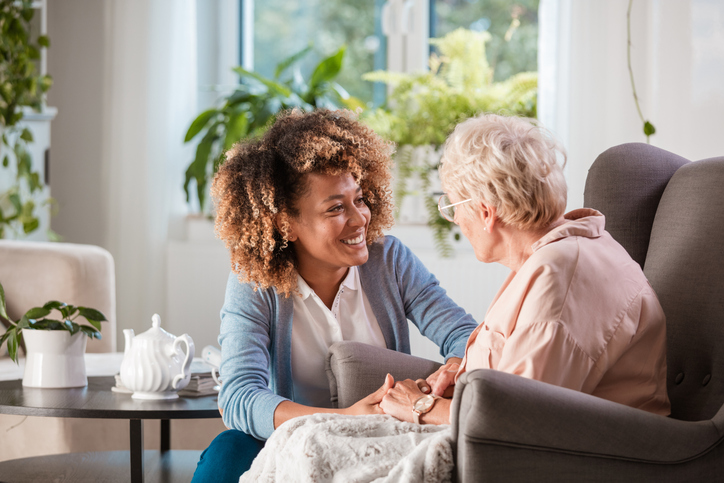Parkinson’s disease (PD) is a progressive, neurodegenerative disease that affects movement. But as many Parkinson’s patients and caregivers know, it’s not just a body disorder, it’s a mind-body disorder. Primary motor symptoms include tremors, rigidity, akinesia (slowness of movement) and loss of balance. However, in many cases, the non-motor symptoms associated with PD, such as depression, cognitive impairment, and sleep disorders, can be just as debilitating.
Nearly one million people in the U.S. are living with Parkinson’s disease, according to the Parkinson’s Foundation. Because the disease is so diverse, no two cases are alike. Symptoms and treatments vary drastically from person to person, so what works for one person may not work for the next. Living with Parkinson’s—and caring for a loved one with the disorder—requires a deep understanding of each individual’s needs and a strong network of support. Your care team may include neurologists, physiotherapists, palliative care physicians, massage therapists and more.
Tips for Caregiving for Parkinson’s Disease
Caregiving for someone with Parkinson’s disease is challenging—physically and emotionally. But there are several ways to make managing the disease easier.
- Watch for subtle changes
While many symptoms of Parkinson’s disease seem subtle when they first appear, they will gradually worsen over time. Watch for physical changes in your loved one, such as difficulty walking, and mental changes, such as mild cognitive impairment (MCI), so you can meet their evolving care needs and maximize their quality of life. - Optimize “on” times
Most people with PD experience the on/off phenomenon where they experience a dramatic shift in their motor functions throughout the day. To work around these episodes, try to set a routine for medications, meals and activities so you can track “on” and “off” times. Plan appointments and outings for known “on” periods when mobility isn’t as challenging, such as after you’ve taken your medication. - Prioritize consistent medication
The way medications such as levodopa affects someone with Parkinson’s varies and can be very unpredictable. It takes an average of 20 to 30 minutes for the medication to take affect and can be influenced by a range of factors, such as high-protein meals and how far the disease has advanced. Timing and dosage of medications are crucial—missing or delaying a dose can quickly worsen motor and non-motor symptoms. Even a delay of five minutes can cause a person to suddenly lose the ability to move, walk and speak. - Encourage regular exercise
Regular exercise is proven to have neuroprotective benefits for people with Parkinson’s disease. It slows the progression of PD and helps those in more advanced stages maintain balance, mobility and independence longer. There are many exercise classes designed specifically for those with PD, including boxing, pedaling, yoga, tai chi and dancing. - Know yourself and your loved one
As a care partner, it’s important to be realistic about your own strengths and weaknesses. Be honest with yourself and your loved one about what you can and can’t do. And don’t overlook your own care needs. Remember to practice self-care by asking for help when you need it, getting proper rest and eating nutritious foods so you can stay healthy and provide the best support for your loved one.
You can read more practical tips and guidance about how to deal with the emotional toll of Parkinson’s disease at AllAboutParkinsons.com or Everything You Need to Know About Caregiving for Parkinson’s Disease by author and speaker, Lianna Marie.

